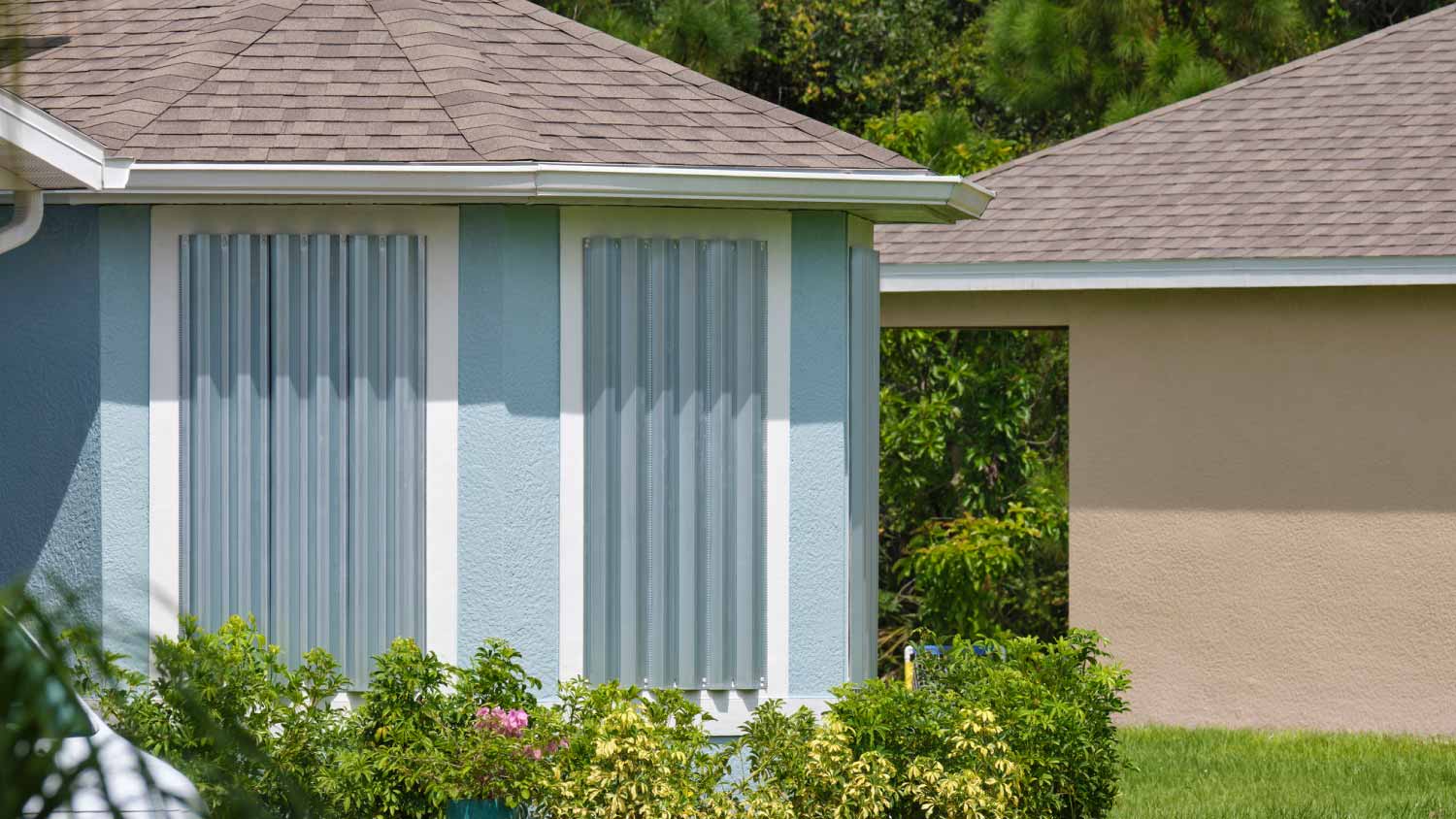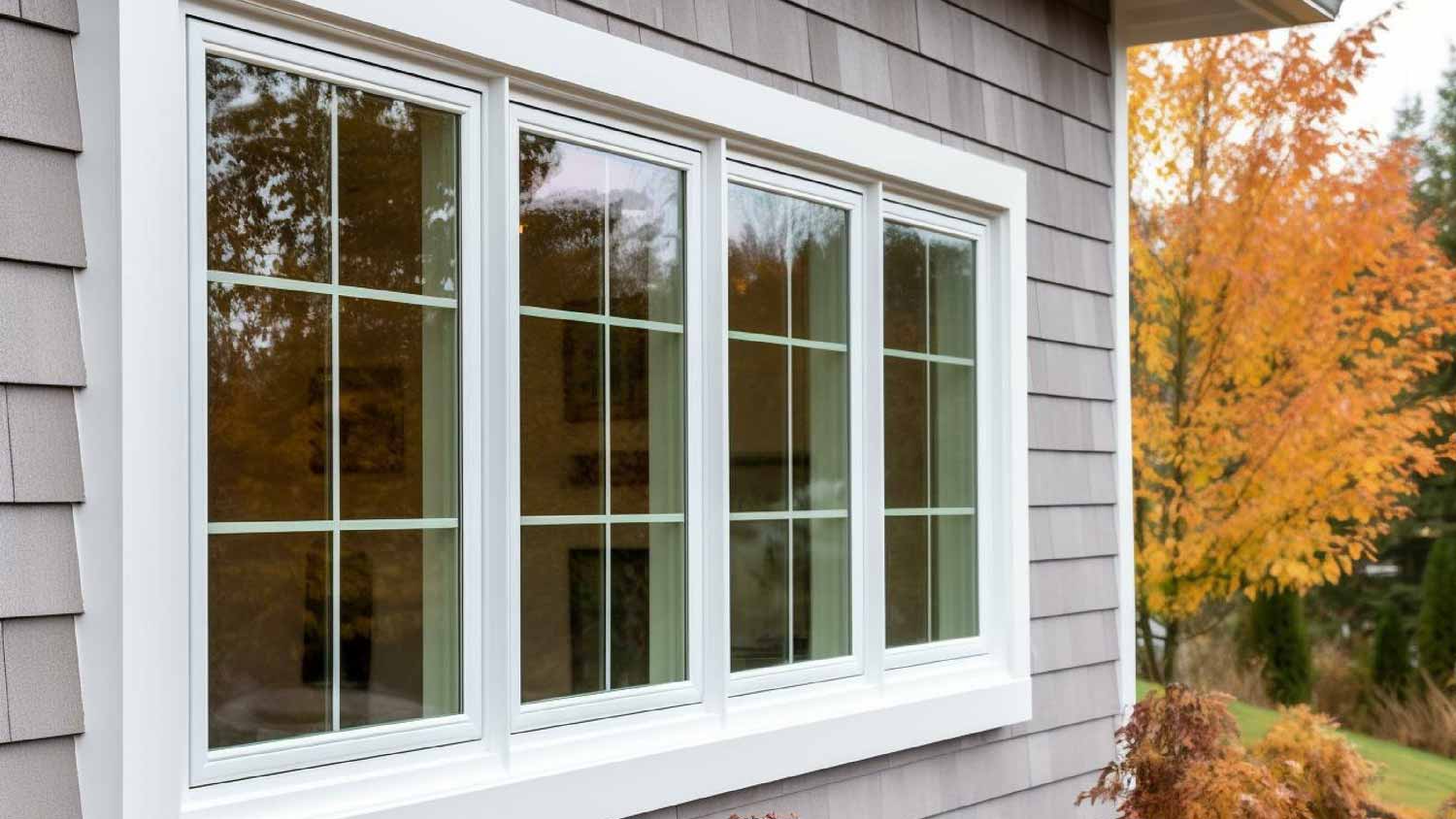How Much Do Hurricane Shutters Cost? [2025 Data]
Most people pay $3,668 for hurricane shutters, but you could pay between $1,479 and $5,856. A pro will evaluate the size, chosen style, and materials for a personalized quote.


Living along the coast can be incredible, but once hurricane season rolls around, you’ll want to protect your home from wind damage. Hurricane shutters cost $3,668 on average, but factors such as type, time of year, and size can impact the total price, with some people paying as much as $11,000 or as little as $255. Expect to pay between $2 and $60 per square foot. This guide will give you a comprehensive estimate of the cost of hurricane shutters.
Hurricane Shutters Cost Factors
Investing in hurricane shutters is a major home improvement. Understanding where every dollar is going is critical to ensuring you’re getting a proper estimate. Let’s go over each cost category below.
Hurricane Shutter Cost by Type
One of the most impactful factors determining how much you spend on hurricane shutters is the type. So, let’s look at the different types of hurricane shutters and what price tags you can expect from them.
| Hurricane Shutter Type | Average Cost (Per Square Foot) |
|---|---|
| Accordion | $15–$30 |
| Roll down | $25–$60 |
| Bahama | $20–$35 |
| Colonial | $25–$35 |
| Plywood | $2–$6 |
| Storm panels | $10–$20 |
| Fabric | $5–$15 |
Accordion Hurricane Shutters
Accordion hurricane shutters are permanent and open and close like an accordion made from aluminum. Accordion hurricane shutters cost $15 to $30 per square foot plus $45 to $100 for labor fees. While not aesthetically pleasing, these shutters are popular among homeowners for budget-friendly prices.
Roll-Down Hurricane Shutters
Roll-down shutters are a durable, permanent hurricane shutter solution. You can lower these shutters manually or automatically. They run about $25 to $60 per square foot, so a 7-square-foot window will cost about $220 to $520, including installation fees.
Bahama Shutters

If you’ve ever been to the Caribbean, you’ve probably seen these sturdy, durable shutters that are aesthetically pleasing, low maintenance, and provide ample privacy and storm protection. Bahama shutters are made from wood, aluminum, or composite, cost $20 to $35 per square foot, and average $185 to $345 for installation per 7-square-foot window.
Colonial Shutters
Colonial shutters are a permanent, durable solution with lots of historic charm. Their convenient design allows for easy opening and closing to protect your homes and windows from storm damage while allowing sun exposure and increased privacy. These shutters cost $25 to $35 per square foot, totaling $220 to $345 for a 7-square-foot window.
Plywood
While not precisely a shutter type, homeowners have used plywood as a hurricane shutter for decades. Commonly referred to as “boarding up,” this temporary solution is cost-effective and offers some protection in low hurricane wind speeds. Plywood hurricane shutters cost $2 to $6 per square foot for a total of $15 to $45 for a 7-square-foot window.
Storm Panels
Storm panels, made of steel or aluminum, cover the entire window during hurricanes. Because of their design, these temporary solutions are only installed during hurricane threats. They cost $10 to $20 per square foot, with an average of $115 to $240 for a 7-square-foot window.
Fabric Storm Shutters
Fabric storm shutters are made from reinforced PVC or mesh sheets and can be a temporary or permanent solution. They work as a shield between hurricane forces and your home. The temporary option costs $5 to $15 per square foot, with an estimated $80 to $205 per 7-square-foot window. The permanent shutters cost $25 to $50 per square foot.
Window Size
Bigger windows will need bigger shutters, which means more material must be used to create them. Depending on the type of hurricane shutter you choose, you could pay anywhere from $2 to $60 per square foot.
Number of Windows
The number of windows that need hurricane shutters will impact your total project price. More windows will result in higher material and labor costs.
Shutter Material
Hurricane shutter costs can vary widely depending on the material you choose. Materials range anywhere from $2 to $60 per square foot.
Metal: Hurricane shutters made of metal are the most durable (and most expensive, depending on the type of metal) option, but you’ll need a lot of assistance or a pro’s help to put them up.
Plastic: Polycarbonate hurricane shutters can be heavy-duty or lightweight. Plus, they can be completely see-through.
Fabric: Fabric shutters are flexible but strong and easy to DIY.
Wood: Offering mid-level protection, wood provides an easy hurricane shutter DIY.
Shutter Location
If you have multiple stories and want hurricane shutters on more than your ground level, it’ll cost more in labor fees.
Labor
When looking for a solution that will protect you and your home from storm damage, a hurricane shutter installer near you may charge $45 to $100 per hour.
Time of Year
When it’s closer to or in the middle of hurricane season, due to supply and demand, it’ll cost more than if you were installing them in mid-winter.
Permits
While not everyone will need a permit to install hurricane shutters, some neighborhoods or homeowners associations (HOAs) might require one. Getting a permit for this project ranges from $50 to $200.
Cost to Install Hurricane Shutters Yourself
If you have experience installing shutters and are confident that they’ll work as intended during a storm, it’s possible to DIY this project. However, it’s best to call a pro if you’re unsure of your ability to properly install the shutters or if you’re dealing with heavy-duty materials, like steel hurricane shutters.
Plywood shutters are the best DIY hurricane shutter option. The cost to board up a window with plywood is $2 to $6 per square foot, so this is the most inexpensive solution. Plus, plywood is more easily installed and removed than other options. However, this is a temporary option, and you should budget an additional $60 for materials and equipment.
"Before any storm, make sure your emergency supply is updated and adequate. FEMA and the American Red Cross recommend that every person have at least 72 hours of food, water, and portable power in case of emergencies—you should have more if you live in a hurricane- or tornado-prone area."
— Allen Baler, CEO, 4Patriots, Nashville, Tennessee
How Angi Gets Its Cost Data
Home is the most important place on earth, which is why Angi has helped more than 150 million homeowners transform their houses into homes they adore. To help homeowners with their next project, Angi provides readers with the most accurate cost data and upholds strict editorial standards. We survey real Angi customers about their project costs to develop the pricing data you see, so you can make the best decisions for you and your home. We pair this data with research from reputable sources, including the U.S. Bureau of Labor Statistics, academic journals, market studies, and interviews with industry experts—all to ensure our prices reflect real-world projects.
Want to help us improve our cost data? Send us a recent project quote to costquotes@angi.com. Quotes and personal information will not be shared publicly.
Frequently Asked Questions
Hurricane shutters increase home value in areas where hurricane activity is common. This additional layer of protection offers peace of mind and extra safety that a buyer doesn’t have to worry about paying for after they move in. You’ll most likely make up the money you spent buying hurricane shutters when selling your home.
Yes, installing hurricane shutters on windows throughout your home is necessary. There’s no predicting which direction the winds will blow, so it’s best to cover all your bases and install shutters on all your windows. If you skip a window, that could be the one debris decides to fly into, so don’t take the chance. At the very least, add some plywood to extra windows.
The best time to put up hurricane shutters is before hurricane season starts, but the latest time is when a hurricane threat is issued, regardless of the forecasted hurricane category. Hurricane season runs from June to the end of November, so plan to install hurricane shutters during the spring.
In areas prone to hurricanes, not having hurricane shutters can make your home more of a risk to insure, leading to higher premiums. But by installing them, you can save about 8% to 10% on your insurance premium. Having hurricane shutters not only saves you on insurance but can also save you from costly window repairs after a storm.
While storm windows can take a hit from hurricane winds and not shatter, installing both hurricane shutters and storm windows is optimal to increase your protection against wind damage and debris. The average cost to install storm windows is $12,000. It’s not a budget-friendly investment, but it will give you peace of mind and potentially save you from window damage.
The biggest disadvantage to hurricane shutters is the cost. Hurricane shutters aren’t the most budget-friendly home improvement project. If you choose a shutter style that you have to go outside to operate, it could pose a challenge if you have issues with mobility. Additionally, they require a fair bit of maintenance and upkeep to stay in the best possible condition to protect your home.















